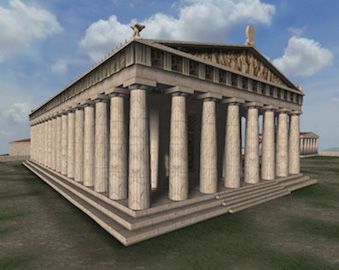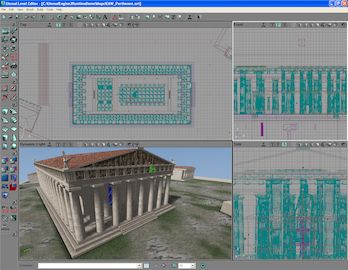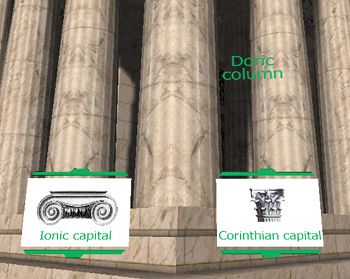
The Parthenon
A virtual learning environment
Built almost 2 500 years ago, the Parthenon is a testament to the cultural, scientific and artistic sophistication of the Ancient Greeks. Although the building has been damaged in war and stripped of many of its features, the architectural magnitude of the Parthenon is still clear.
To genuinely appreciate the grandeur of the Parthenon, one needs to explore the Acropolis. Regrettably, this opportunity is unavailable to most people, making the development of a genuine appreciation difficult. VLEs provide a valuable, alternative experience.

Computer Game Technology
Recreating the Parthenon
Recreating the Parthenon
‘Exploring Ancient Wonders: The Parthenon’ used computer game technology (version 2 of the Unreal Engine) to recreate the Parthenon in its original form. It allowed users to engage with this ancient wonder through self-directed exploration from a first-person perspective. Information about the history and architecture of the Parthenon was accessible to users at information markers and via a fly-by cinematic.
The technology used and the level of detail included in the environment allowed the VLE to run on computers that were available for student use in 2006.

Interactive and ImmersiveFreedom to explore
Interactive markers were distrubuted throughout the environment. When activated, information about the particular feature was displayed. The VLE gave the students freedom to view the features of the Parthenon from any angle.
As part of the activity, students completed an Explorer’s Journal worksheet. It included images of actual artefacts from the Parthenon. Students used thier learning to write an information statement for each artefact.